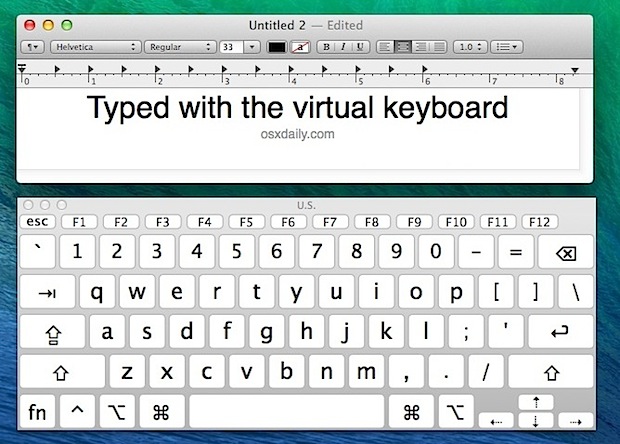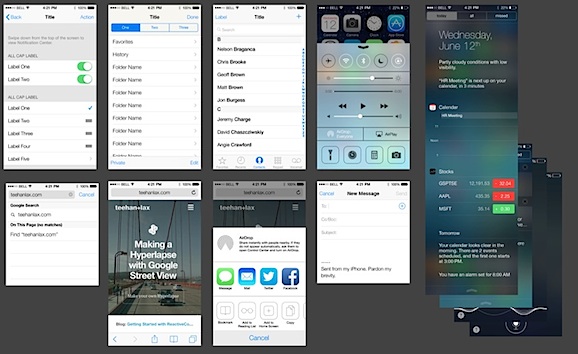Turn Off Automatic Video Playing in Instagram & Save Cell Data Bandwidth
![]() Instagram, the popular photo sharing app for iOS, recently added video support that allows users to post filtered videos to their picture collections. Browsing through an Instagram feed now results in quite a few videos that auto-play by default, an aspect which can be pretty obnoxious if you want to keep quiet. Perhaps worse than the auto-play audio though is that it also will consume a fair amount of bandwidth over time, especially if you follow a lot of people posting videos and you’re on a 3G or LTE connection. The reason is pretty simple, video, even short ones, are much larger to download than a simple static photo.
Instagram, the popular photo sharing app for iOS, recently added video support that allows users to post filtered videos to their picture collections. Browsing through an Instagram feed now results in quite a few videos that auto-play by default, an aspect which can be pretty obnoxious if you want to keep quiet. Perhaps worse than the auto-play audio though is that it also will consume a fair amount of bandwidth over time, especially if you follow a lot of people posting videos and you’re on a 3G or LTE connection. The reason is pretty simple, video, even short ones, are much larger to download than a simple static photo.
Not to worry, you can turn off video auto-play on the Instagram app for iPhone and for Android, we’ll show you exactly how to do this regardless of the version of the Instagram app you are running.



 Unlocking an iPhone through AT&T is now lightning fast, and in some cases you’ll have an unlocked iPhone in under 30 minutes. I recently had the chance to experience this directly while writing
Unlocking an iPhone through AT&T is now lightning fast, and in some cases you’ll have an unlocked iPhone in under 30 minutes. I recently had the chance to experience this directly while writing 
 A new update to Apple TV brings streaming access to several popular TV services and networks, including HBO GO, ESPN, Sky News, Qello, and CrunchyRoll. Versioned as 5.3, the update requires a second or third generation Apple TV, and can be downloaded through iTunes or by using the direct firmware links included in this article.
A new update to Apple TV brings streaming access to several popular TV services and networks, including HBO GO, ESPN, Sky News, Qello, and CrunchyRoll. Versioned as 5.3, the update requires a second or third generation Apple TV, and can be downloaded through iTunes or by using the direct firmware links included in this article.

 An unlocked iPhone means it can use any cellular network, so long as you have a compatible carrier SIM card. Due to this, unlocked iPhones are more valuable and highly desired for both local and international users, because it allows you to use any GSM carrier whether at home or abroad just by swapping out SIM cards. But how do you know if an iPhone is unlocked or not? You usually can’t tell just by looking at it, but we’ll show you how to find out if the device is factory unlocked or not using one of three methods. If you plan on doing some international travel, you’ll want to check before you leave. Similarly, if you plan on buying or selling an iPhone, you’ll want to check if its unlocked or not before completing the transaction.
An unlocked iPhone means it can use any cellular network, so long as you have a compatible carrier SIM card. Due to this, unlocked iPhones are more valuable and highly desired for both local and international users, because it allows you to use any GSM carrier whether at home or abroad just by swapping out SIM cards. But how do you know if an iPhone is unlocked or not? You usually can’t tell just by looking at it, but we’ll show you how to find out if the device is factory unlocked or not using one of three methods. If you plan on doing some international travel, you’ll want to check before you leave. Similarly, if you plan on buying or selling an iPhone, you’ll want to check if its unlocked or not before completing the transaction. Wondering what is in that zip file or archive you downloaded, but you don’t want to extract it to find out? Maybe you are hunting around in a see of archives for a specific file you
Wondering what is in that zip file or archive you downloaded, but you don’t want to extract it to find out? Maybe you are hunting around in a see of archives for a specific file you  Setting up a dual-boot environment for OS X Mavericks and OS X 10.8 (or even 10.7 and 10.6 if you’re still running an older version of Mac OS X) is easy and allows for a fresh installation of Mavericks to test and develop with. Because the original OS X installation remains untouched, it’s also the safest way to give Mavericks a trial run, which is perfect for running the Developer Previews or if you’re just not sure you’re ready to run OS X 10.9 full time yet.
Setting up a dual-boot environment for OS X Mavericks and OS X 10.8 (or even 10.7 and 10.6 if you’re still running an older version of Mac OS X) is easy and allows for a fresh installation of Mavericks to test and develop with. Because the original OS X installation remains untouched, it’s also the safest way to give Mavericks a trial run, which is perfect for running the Developer Previews or if you’re just not sure you’re ready to run OS X 10.9 full time yet. 





